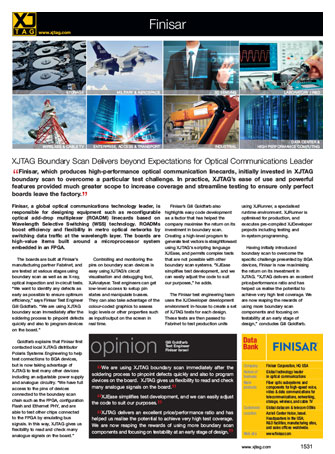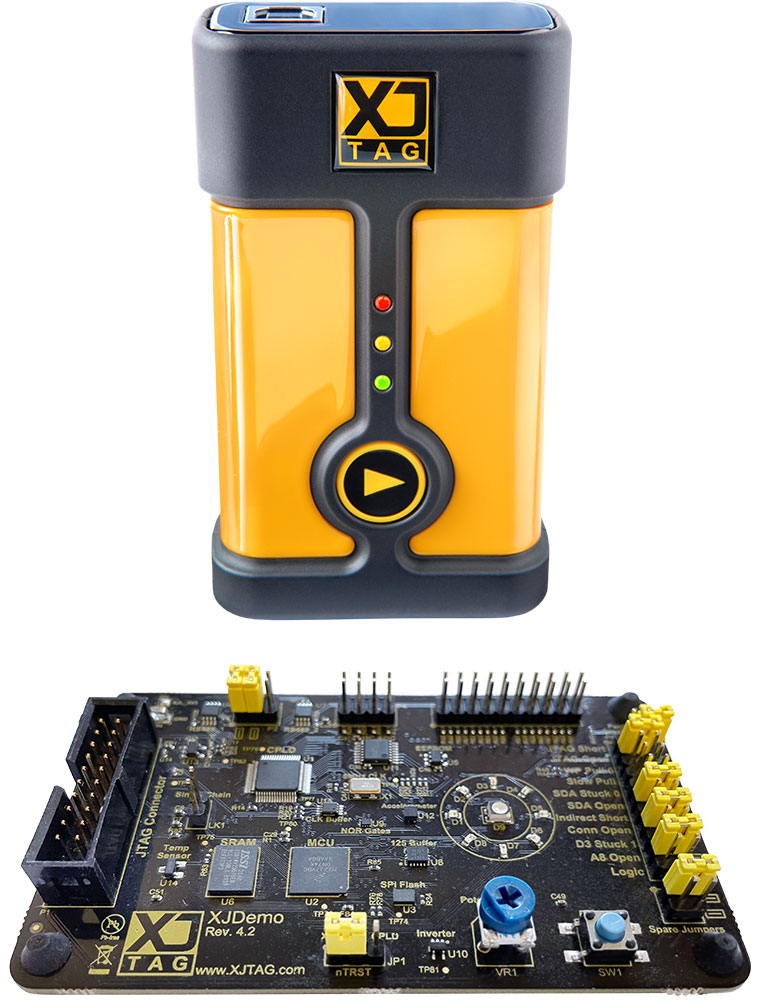
XJTAG Boundary Scan Delivers beyond Expectations for Optical Communications Leader
Finisar, which produces high-performance optical communication linecards, initially invested in XJTAG boundary scan to overcome a particular test challenge. In practice, XJTAG’s ease of use and powerful features provided much greater scope to increase coverage and streamline testing to ensure only perfect boards leave the factory.
Finisar, a global optical communications technology leader, is responsible for designing equipment such as reconfigurable optical add-drop multiplexer (ROADM) linecards based on Wavelength Selective Switching (WSS) technology. ROADMs boost efficiency and flexibility in metro optical networks by switching data traffic at the wavelength layer. The boards are high-value items built around a microprocessor system embedded in an FPGA.
The boards are built at Finisar’s manufacturing partner Fabrinet, and are tested at various stages using boundary scan as well as as X-ray, optical inspection and in-circuit tests. “We want to identify any defects as early as possible to ensure optimum efficiency,” says Finisar Test Engineer Gili Goldfarb. “We are using XJTAG boundary scan immediately after the soldering process to pinpoint defects quickly and also to program devices on the board.”
Goldfarb explains that Finisar first contacted local XJTAG distributor Polaris Systems Engineering to help test connections to BGA devices, but is now taking advantage of XJTAG to test many other devices including an adjustable power supply and analogue circuitry. “We have full access to the pins of devices connected to the boundary scan chain such as the FPGA, configuration Flash and Ethernet PHY, and are able to test other chips connected to the FPGA by emulating bus signals. In this way, XJTAG gives us flexibility to read and check many analogue signals on the board.”
Controlling and monitoring the pins on boundary scan devices is easy using XJTAG’s circuit visualisation and debugging tool, XJAnalyser. Test engineers can get low-level access to setup pin states and manipulate busses. They can also take advantage of the colour-coded graphics to assess logic levels or other properties such as input/output on the screen in real time.
Finisar’s Gili Goldfarb also highlights easy code development as a factor that has helped the company maximise the return on its investment in boundary scan. Creating a high-level program to generate test vectors is straightforward using XJTAG’s scripting language XJEase, and permits complex tests that are not possible with other boundary scan systems. “XJEase simplifies test development, and we can easily adjust the code to suit our purposes,” he adds.
The Finisar test engineering team uses the XJDeveloper development environment in-house to create a set of XJTAG tests for each design. These tests are then passed to Fabrinet to test production units using XJRunner, a specialised runtime environment. XJRunner is optimised for production, and executes pre-compiled XJDeveloper projects including testing and in-system programming.
Having initially introduced boundary scan to overcome the specific challenge presented by BGA devices, Finisar is now maximising the return on its investment in XJTAG. “XJTAG delivers an excellent price/performance ratio and has helped us realise the potential to achieve very high test coverage. We are now reaping the rewards of using more boundary scan components and focusing on testability at an early stage of design,” concludes Gili Goldfarb.

We are using XJTAG boundary scan immediately after the soldering process to pinpoint defects quickly and also to program devices on the board. XJTAG gives us flexibility to read and check many analogue signals on the board.
XJEase simplifies test development, and we can easily adjust the code to suit our purposes.
XJTAG delivers an excellent price/performance ratio and has helped us realise the potential to achieve very high test coverage. We are now reaping the rewards of using more boundary scan components and focusing on testability at an early stage of design.

Company: Finisar Corporation, HQ USA
Nature of business: Global technology leader in optical communications
Main product: Fiber optic subsystems and components for high-speed voice, video & data communications for telecommunications, networking, storage, wireless, and cable TV
Customers: Global datacom & telecom OEMs
Location: Azrieli Center Holon, Israel. Headquarters in the USA. R&D facilities, manufacturing sites, and sales offices worldwide.
Web site: www.finisar.com

Configure your products














